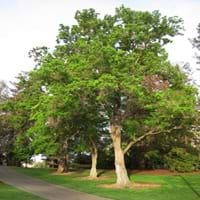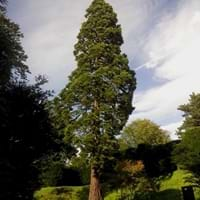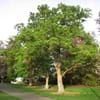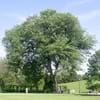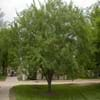Life Span
Perennial
Perennial
Type
Tree
Needled or Scaled Evergreen
Origin
Eastern Asia, China
Western United States, California
Types
Candleberry tree
not available
Habitat
Saline Soils, Upland, Upland soils
coastal environs, Coastal Regions, Humid climates
USDA Hardiness Zone
8-10
8-9
Sunset Zone
H2, 8, 9, 12, 13, 14, 15, 16, 18, 19, 20, 21
4, 5, 6, 7, 8, 9, 14, 15, 16, 17, 18, 19, 20, 21, 22, 23, 24
Habit
Oval or Rounded
Pyramidal
Minimum Height
Not Available
Minimum Width
Not Available
Flower Color
Yellow
Not Available
Flower Color Modifier
Bicolor
Bicolor
Fruit Color
White, Ivory
Brown
Leaf Color in Spring
Green
Dark Green
Leaf Color in Summer
Green
Dark Green
Leaf Color in Fall
Yellow, Red, Orange
Dark Green
Leaf Color in Winter
Not Available
Dark Green
Leaf Shape
Heart-shaped
Lanceolate
Plant Season
Spring, Summer, Fall
Spring, Summer, Fall, Winter
Sunlight
Full Sun
Full Sun, Partial Sun
Growth Rate
Fast
Very Fast
Type of Soil
Clay, Loam, Sand
Loam
The pH of Soil
Acidic, Neutral, Alkaline
Acidic, Neutral
Soil Drainage
Average
Well drained
Bloom Time
Spring
Not Available
Tolerances
Cold climate, Drought, Pollution, Salt
Wet Site
Where to Plant?
Ground
Ground
How to Plant?
Grafting, Seedlings, Stem Planting, Transplanting
Seedlings, Stem Planting
Plant Maintenance
Medium
Medium
Watering Requirements
Average Water Needs, Medium, Requires watering in the growing season
Requires regular watering
In Summer
Lots of watering
Lots of watering
In Spring
Moderate
Moderate
In Winter
Average Water
Average Water
Soil pH
Acidic, Neutral, Alkaline
Acidic, Neutral
Soil Type
Clay, Loam, Sand
Clay, Loam, Sand
Soil Drainage Capacity
Average
Well drained
Sun Exposure
Full Sun
Full Sun, Partial Sun
Pruning
Remove damaged leaves, Remove dead leaves, Remove dead or diseased plant parts, Remove deadheads
Prune in winter, Prune lower leaves
Fertilizers
fertilize in growing season, Less fertilizing, Nitrogen
Compost, Mulch, organic fertlizers
Pests and Diseases
Insects, Red blotch
Bark beetles, Scale, Spider mites, Tip Miners
Plant Tolerance
Cold climate, Drought, Salt
Wet Site
Flowers
Insignificant
None
Flower Petal Number
Single
Not Available
Fragrant Bark/Stem
No
Yes
Foliage Texture
Medium
Fine
Foliage Sheen
Matte
Matte
Attracts
Not Available
Not Available
Allergy
Nausea, Toxic, Vomiting
Asthma, Red eyes, Skin irritation, Toxic
Aesthetic Uses
Landscape Designing
Showy Purposes
Beauty Benefits
No Beauty Benefits
Not Available
Environmental Uses
Absorbs greenhouse gases, Absorbs huge amounts of CO2, Air purification, Amazing growth rate, Erosion control, Food for insects, Forms dense stands, Nesting sites for birds, No fertilizer, pesticides, or herbicides needed, Prevent Soil Erosion, Shadow Tree, Shelter for wildlife, Soil protection, soil stabilisation, Used to establish native woodland, Very little waste, Wildlife, Windbreak
Shadow Tree, Wildlife
Medicinal Uses
Boils
Not Available
Part of Plant Used
Fruits, Leaves, Seeds
Whole plant
Other Uses
Employed in herbal medicine, Showy Purposes, Used as firewood, Used for its medicinal properties
used for making roof trusses, poles, joists, piles, Used in construction, Wood is used for making furniture
Used As Indoor Plant
No
No
Used As Outdoor Plant
Yes
Yes
Garden Design
Feature Plant, Shade Trees, Street Trees
Shade Trees, Street Trees
Botanical Name
TRIADICA sebifera
SEQUOIA sempervirens
Common Name
Chinese Tallow
Redwood
In Hindi
चीनी तेल
Coast Redwood
In German
chinesisch Talg
Redwoodbaum
In French
chinesisch Talg
côte Redwood
In Spanish
suif chinois
Redwood Coast
In Greek
κινέζικο ζωικό λίπος
ακτή Redwood
In Portuguese
sebo chinesa
costa Redwood
In Polish
chiński łój
Wybrzeże Redwood
In Latin
Chinese adipe
Coast Redwood
Phylum
Embryophyta
Coniferophyta
Class
Magnoliopsida
Pinopsida
Order
Malpighiales
Pinales
Family
Euphorbiaceae
Cupressaceae
Clade
Angiosperms, Eudicots, Rosids
Not Available
Tribe
Hippomaneae
Not Available
Subfamily
Euphorbioideae
Sequoioideae
Number of Species
Not Available
Season and Care of Chinese Tallow and Coast Redwood
Season and care of Chinese Tallow and Coast Redwood is important to know. While considering everything about Chinese Tallow and Coast Redwood Care, growing season is an essential factor. Chinese Tallow season is Spring, Summer and Fall and Coast Redwood season is Spring, Summer and Fall. The type of soil for Chinese Tallow is Clay, Loam, Sand and for Coast Redwood is Loam while the PH of soil for Chinese Tallow is Acidic, Neutral, Alkaline and for Coast Redwood is Acidic, Neutral.
Chinese Tallow and Coast Redwood Physical Information
Chinese Tallow and Coast Redwood physical information is very important for comparison. Chinese Tallow height is Not Available and width Not Available whereas Coast Redwood height is 2,130.00 cm and width 610.00 cm. The color specification of Chinese Tallow and Coast Redwood are as follows:
Chinese Tallow flower color: Yellow
Chinese Tallow leaf color: Green
Coast Redwood flower color: Not Available
- Coast Redwood leaf color: Dark Green
Care of Chinese Tallow and Coast Redwood
Care of Chinese Tallow and Coast Redwood include pruning, fertilizers, watering etc. Chinese Tallow pruning is done Remove damaged leaves, Remove dead leaves, Remove dead or diseased plant parts and Remove deadheads and Coast Redwood pruning is done Prune in winter and Prune lower leaves. In summer Chinese Tallow needs Lots of watering and in winter, it needs Average Water. Whereas, in summer Coast Redwood needs Lots of watering and in winter, it needs Average Water.
